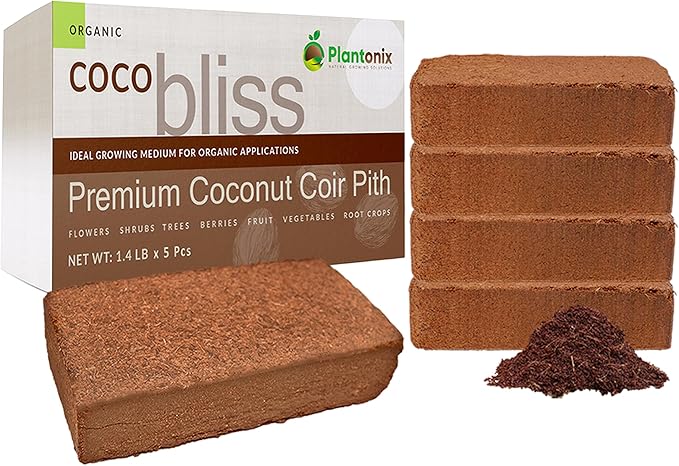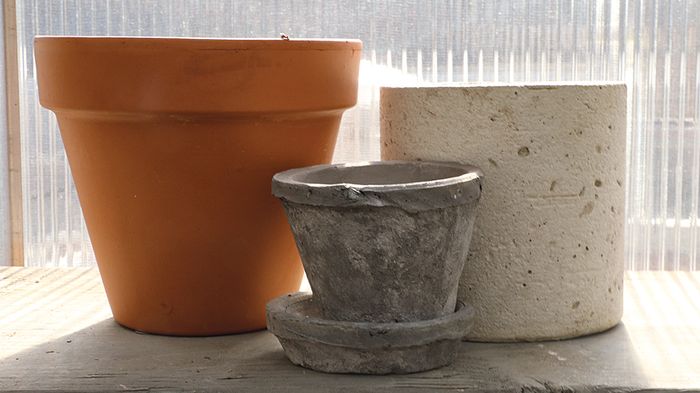Potting Soil Recipes
Cook up your own container mix that is suited to your plants

Just as creating a healthy soil environment is crucial for your in-ground plants, providing a suitable growing medium for your container plants is a key factor to success. Most gardeners do fine with bagged container mixes available at the nursery, but these one-size-fits-all options might not be the best options, especially if you are growing plants with specific soil needs.
Making your own container soil might sound like a lot of unnecessary work, but it can improve your plants’ performance. And because these mixes have the optimal amount of nutrients and proper drainage, they reduce the amount of time you spend feeding and caring for your containers.
Each of the following recipes can be mixed in a wheelbarrow or garden cart and tweaked based on your needs or what is available to you. You can also save time and money by purchasing the items in bulk and making large batches to set aside for a later date or to share with your gardening friends.
Learn more about the ingredients mentioned in these recipes.
Basic Blend
Simple ingredients make this adaptable mix easy and affordable for everyone
Moisten the ingredients to make mixing easier. Place a ½-inch mesh screen over a garden cart or other large container, and sift all ingredients to remove any large particles. Mix thoroughly.
The handfuls of garden lime, soybean meal, rock phosphate, and kelp meal (any of which can be omitted) provide extra nutrients that enable this mix to feed plants for a year or two without additional fertilization.
Recipe
1 part peat moss
1 part perlite
1 part compost
1 part good garden soil
Optional ingredients
A handful each of:
Garden lime
Soybean meal
Rock phosphate
Kelp meal
—Lee Reich, soil scientist, New Paltz, New York
Annuals
High in nutrients, this mix pumps out the flowers without extra feeding
Because the worm castings and chicken manure provide enough nutrients to last throughout the season and the pine bark continues to increase fertility as it decomposes, this mix requires little or no extra feeding on your part.

Recipe
1 part expanded slate
1 part composted chicken manure
1 part worm castings
1 part composted pine bark
1 part coarse river sand
—Bobbie Saul, Saul Nurseries, Atlanta, Georgia
Alpine Plants
Low fertility and a top-dressing of grit is best
Alpine plants are adapted to survive in the bare minimum of soil conditions, so many store-bought mixes high in organic matter won’t work. This recipe makes a lean soil that alpine plants love, but make sure the potting soil you use has no added synthetic fertilizer.
Mulch the surface of the soil with small pebbles or grit to keep the crowns of the plants from rotting.

Recipe
1 part expanded slate or shale
1 part bagged potting soil
1 part bagged playground sand
—Lori Davis, Sunny Border Nurseries, Kensington, Connecticut
Tropicals
The best blend has high fertility and the right pH
Though tropicals are a diverse group of plants, they generally prefer a loose, acidic, well-drained, fertile soil high in organic matter. Common tropical plants, like cannas and bananas, will grow in any good soil, but this mix will help them attain optimal growth.

Recipe
Mix together:
2 parts composted bark
2 parts pure pine bark
1 part rice hulls
Handful of charcoal pellets
Combine:
3 parts above mixture
1 part peat moss
1 part perlite
1 part calcined clay
—Glenn Stokes, Stokes Tropicals, Jeanerette, Louisiana
Cacti and Succulents
Perfect drainage makes this recipe succeed
Top-dress the container soil with small river rock, gravel, aquarium stone, or a fine-grade roofing gravel to keep the crowns of the plants from rotting.
To increase acidity just slightly—something all succulents like—add 1 tablespoon white vinegar to 5 gallons water when watering.

Recipe
5 parts perlite
4 parts bagged potting soil
1 part coarse sand
Pinch of rock dust
—Jeff Moore, Solana Succulents, Solana Beach, California
Woody Plants and Perennials
This long-lasting mixture is the perfect medium for long-term plants
If the mix clumps together and the compost you use is heavy, add more perlite to ensure good drainage. Use extra compost or bark when growing more mature plants, but don’t make it too rich for young plants—it could damage their delicate roots and stems.

Recipe
1 part peat moss
1 part composted bark
1 part compost
1 part sand
1 part perlite
—Rita Randolph, Randolph’s Greenhouses, Jackson, Tennessee
Regional brands are a good bet
If you want great container soil but aren’t ready to make it yourself, check out some local options. These are just a few examples, from small companies seeking to provide high-quality organic alternatives to larger, mass-produced products. Most are available at local independent garden centers. Ask for them by name, or look them up online.

South
Lady Bug Natural Brand Vortex Potting Soil, ladybugbrand.com
Mid-Atlantic
Organic Mechanics Peat-Free Potting Soil, organicmechanicsoil.com
Northeast
Coast of Maine Bar Harbor Blend Premium Potting Soil, coastofmaine.com
West
Black Gold Natural and Organic Potting Soil, blackgold.bz
Daryl Beyers is a former assistant editor and is a member of the Professional Gardeners’ Guild.
Photos, except where noted: Krista Hicks Benson
Fine Gardening Recommended Products

Ashman Garden Cultivator (1Pack)
Fine Gardening receives a commission for items purchased through links on this site, including Amazon Associates and other affiliate advertising programs.

Coco Bliss 650gm Bricks (5-Pack) - Organic Coco Coir
Fine Gardening receives a commission for items purchased through links on this site, including Amazon Associates and other affiliate advertising programs.






Comments
I'm having trouble with the mix for my potting soil mix I did the 1 part peat 1 part compost and 1 part sand and 1 part perlite but the mix isn't draining what do I do?
Don't use sand. It only adds weight. Be careful using peat, it doesn't drain well and if it dries out it is very hard to get it wet again. Most mixes should contain mostly pine bark. Use pine bark fines or pine bark mulch for the majority of the mix. Pine bark is slow to decompose and retains the air spaces needed by roots and drainage. I use pine bark fines and a small amount of fireplace ashes for my mix. The ph runs between 5.5 and 6.5 which is what I am looking for. It holds enough moisture yet drains well.
Mulch absorbs the nutrients and then the plant never gets it never use mulch
The only difference between pine bark fines and pine bark mulch is the size of the particles. Mulch is composed of larger particles than fines. Neither fines nor mulch absorbs nutrients. You may be referring to the process of decomposition of organic material where the micro organisms that break down organic material consume nitrogen in the process, but decomposition releases other nutrients contained in the pine bark. Normal fertilization replaces the nitrogen used by the micro organisms that are present in any proper soil or compost.
As a leader in gardening knowledge, I am disappointed to see so many recipes using peat moss. We have known for a number of years that raiding the complex and slow-growing ecosystems of bogs is having and will have very serious consequences.
Should have read my before posting - I meant that Fine Gardening magazine and the contributors are leaders in gardening knowledge, not that I was ;)
Log in or create an account to post a comment.
Sign up Log in